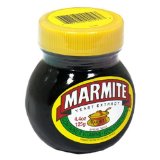Many people use the word yeast to describe yeast extracts when in fact it is very inappropriate. Although they are closely related to one another, these two terms shouldn’t be confused from each other especially when used in the kitchen.
The yeast extract is actually a collective term used to describe a group of yeast goods that have already been processed. They are also used as additives to foods or simply as food flavorings that function similarly as MSG or monosodium glutamate. Yeast extracts contain what is known as glutamic acids, which are made from fermenting acids and bases. These acids are usually found in baking yeast products only. Yeast extracts are very different from the actual yeast because they are either commercially prepared in liquid form to paste-like consistency. Conversely, yeasts are often granulated and grainy in both texture and appearance.
In terms of flavor, yeast extracts often have a very strong and salty flavor. Although most of the yeast extracts used are pungent and salty, there are also many sweeter variations of the said food item that is being used in some parts across the U.S. As a nutritious food add-on, this item is being used as bread spread (together with butter) and included in a mixture to create a hot and flavorful drink. Most especially in the U.K., New Zealand and Australian regions, this extract is a very popular additive. No wonder yeast extract brands such as Vegemite and Marmite are making it big in the food industry today.
Moreover, yeasts are non-nutritional food ingredients whereas yeast extracts are very nutritious. Yeasts steal the much-needed nutrients from your body whereas the latter provides your system with more energy. Yeast extracts are actually deactivated yeast so to speak.
Yeast is actually a living organism. It is a unicellular fungus that is able to convert sugars and starches into CO2 bubbles (carbon dioxide) and alcohol as one of the byproducts. Because of such a function, yeasts have been used for generations in wine, bread and beer making in which there is a specific yeast type used for each product. Yeast extracts on the contrary are made by pasteurization that involves adding NaCl or salt into a suspension. The resultant concentrated solution triggers the yeast cells to auto destruct. In its dying stage, the mixture is heated and the husks are cleared away to make the final yeast extracts.
Summary :
1.Yeasts are granulated and grainy whereas yeast extracts are often available in liquid or paste form.
2.Yeasts are not nutritious whereas yeast extracts are nutritious food additives.
3.Yeast is a unicellular organism whereas yeast extract were made from deactivating or pasteurizing the yeast itself.
- Difference Between Plant Protein and Animal Protein - March 7, 2024
- Difference Between Crohn’s and Colitis - March 7, 2024
- Difference Between Expression and Equation - March 7, 2024


Wow!! This was so informative. Who would know that there’s such a distinction between these two similar names? So much so that I believed it was some type of cover up to deceive. In reality I thought yeast was nutritious and yeast extracts were not.
Thank you for clearing that up for me
Reply
Several descriptive words in this article are misleading. I will focus on the description of “deactivated” yeast. Yes, there are “deactivated” yeast extracts. These are extracts that have been grown on certain hosts and were at one time “active” yeast and then “deactivated” through various methods. HOWEVER, most popular brands of “yeast extract” are grown on hosts that are not an “active” the yeast. I.e. Red Star Nutrional Yeast (grown on molasses), as well as others. Therefore, there is no need to “de-activate” and would be more accurately described as “inactive” yeast extract. The host of the yeast extract determines this differential description. When in doubt (as most ingredient lists are vague) contact the mfg or distributor for more detailed information. In my experience most have info on the web.
Reply
Hi
This is the first time I’m going to use yeast extract. Recipes still use dry yeast. What amount of the yeast extract is to be used instead of 1 teaspoon dry yeast
THANKS
Reply
Can this product ( Marmite), yeast extract be used for baking bread.
Reply
This article was very informative. But I am still confused regarding the two products when it comes to consumption. I am allergy to yeast is it possible to eat foods containing yeast extract without having an allergic reaction?
Reply
Would love to know that answer too. My mother-in-law is allergic to yeast. Trying to cook for her is very hard.
Reply
I also would like to know. I have spent hours trying to google this answer as my wife has an allergy to yeast. However I’m unsure if yeast extract and yeast are causing my wife issues. Is just yeast or both yeast and yeast extract?
Thanks
Reply
I used yeast extract in a recipe today for the first time….. just 1/2 tbsp in around 2L of chicken and black bean sauce broth added a ‘pow’ to the flavour and intensified it amazingly. I recommend anybody to try this, I’m really impressed.
Reply